Solar System History 101
From the birth of the planets, moons and space rocks to how things are now.
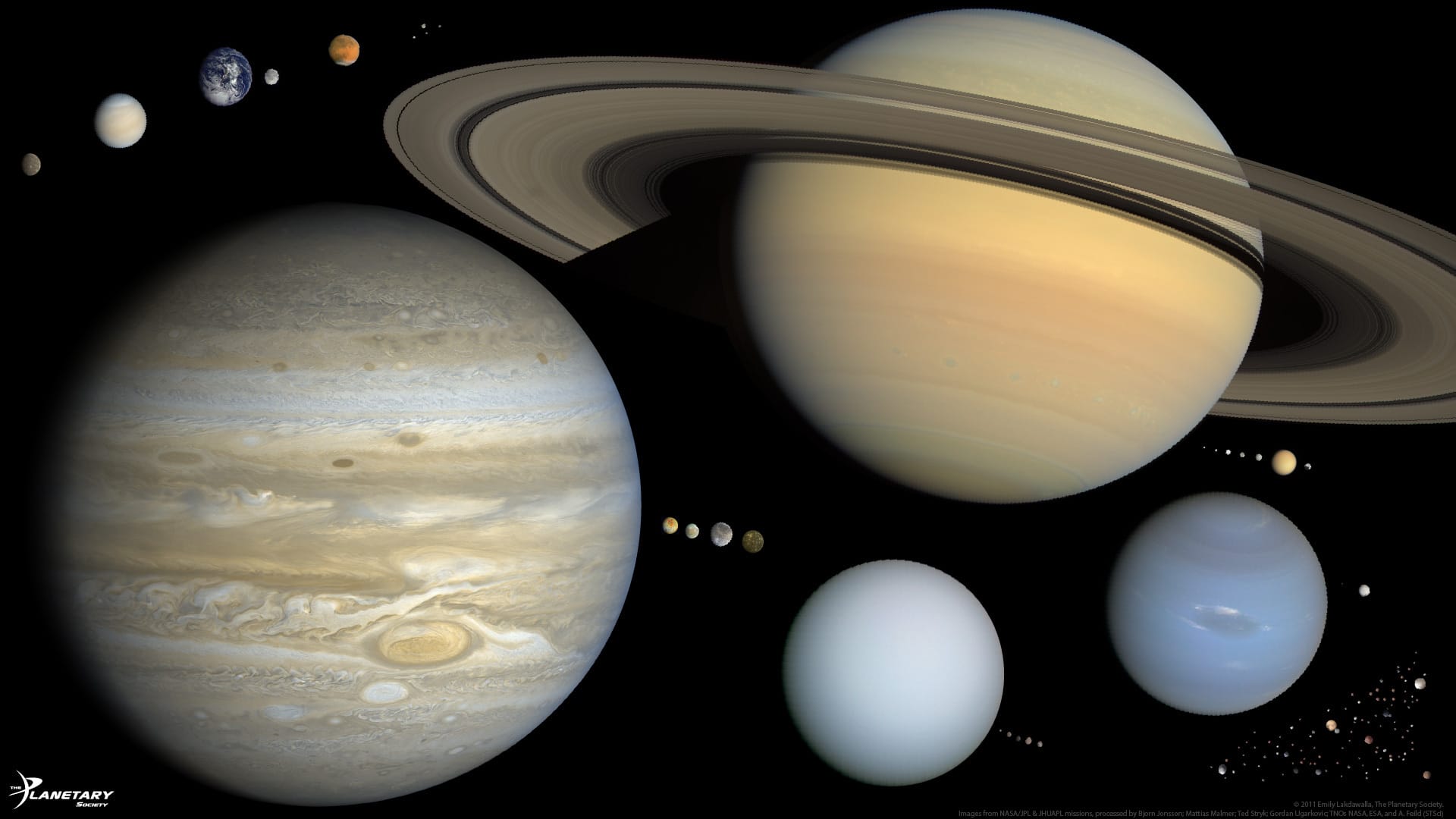
Our solar system is a wondrous place. Countless worlds lie spread across billions of kilometers of space, each dragged around the galaxy by our Sun like an elaborate clockwork.
The smaller, inner planets are rocky, and at least one has life on it. The giant outer planets are shrouded in gas and ice; miniature solar systems in their own right that boast intricate rings and moons. Scattered throughout the solar system are small worlds like lumpy asteroids and comets and complex dwarf planets like Pluto and Ceres.
How did our solar system come to be? Why are these objects where they are now? Here is the series of events that made and shaped our solar system, to the best of our knowledge, pieced together from space missions, Earth-based observations, and complex simulations by scientists trying to figure out our place in space.
The Sun shines
The Big Bang brought the Universe into existence 13.8 billion years ago. Our solar system formed much later, about 4.6 billion years ago. It began as a gigantic cloud of dust and gas created by leftover supernova debris—the death of other stars created our own. The cloud, which orbited the center of our galaxy, was mostly hydrogen with some helium and traces of heavier elements forged by prior stars.
Over the next 100,000 years, the cloud collapsed under its own gravity to form hot, dense protostars, one of which was our Sun. Our baby Sun kept accumulating material for 50 million years, at which point temperatures and pressures in the core became so intense that hydrogen began fusing into helium.
And then there was light. Hydrogen fusion released tremendous amounts of energy that countered the Sun’s gravity, stabilizing the young star and keeping it from accumulating more material out of the rotating disk of leftover debris around it. The Sun entered the longest phase of its life, becoming a main sequence star. It is still in this phase today and will remain so for about 5 billion years.
Within 500 million years, the Sun separated from its stellar siblings and continued orbiting our galaxy’s center as a lone star.
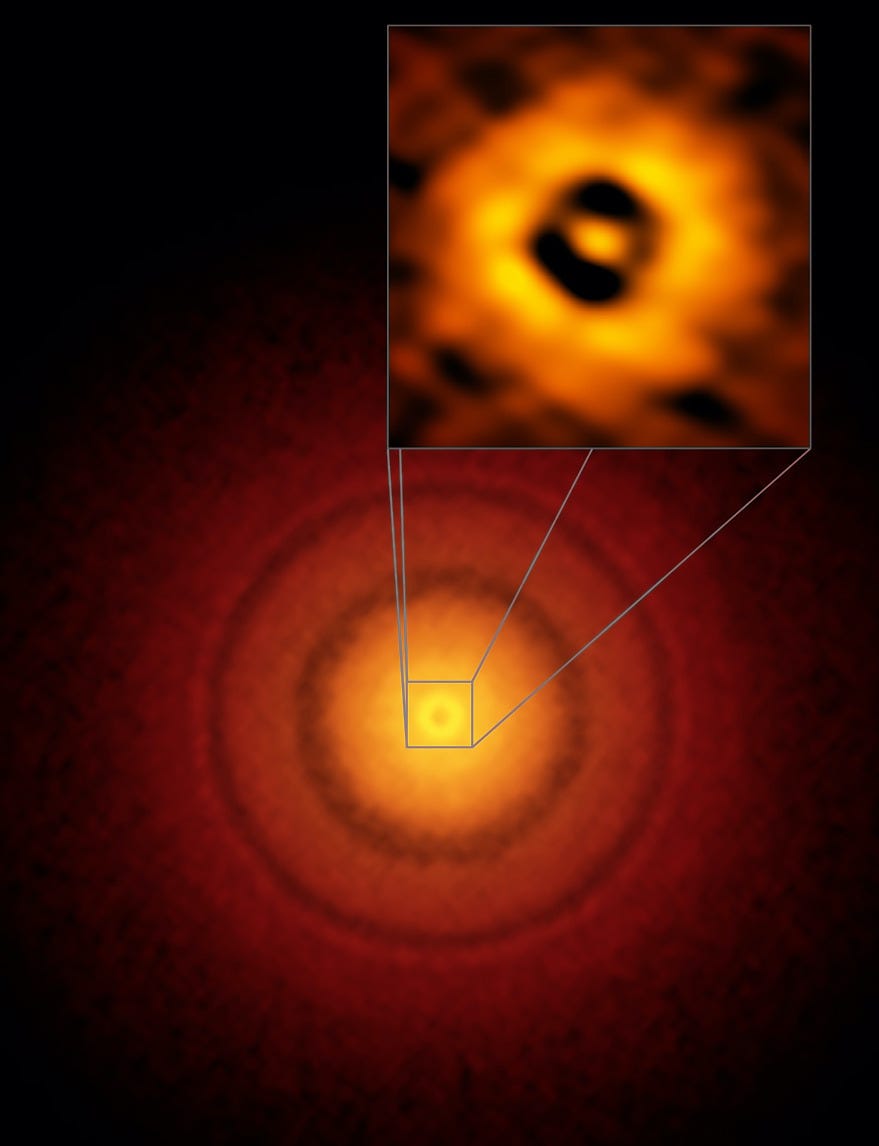
The planets form
While the infant Sun was still collecting material to start fusing hydrogen, tiny dust particles in the disk around it randomly collided and stuck to each other, growing in just a few years to objects hundreds of meters across. This process continued for several thousands of years, forming kilometer-sized objects big enough to gravitationally attract each other. This led to more collisions and accretions, forming Moon-sized protoplanets in less than a million years.
In the inner, hotter part of the solar disk, the planets grew primarily from rocks and metals because it was too warm for water and other volatiles—substances that evaporate at room temperature—to condense. Up to hundreds of these worlds collided and combined in the inner solar system for about 100 million years until only four large bodies remained: Mercury, Venus, Earth, and Mars. The inner planets didn’t get as big as the outer planets because the percentage of rocks and metals available in the Universe—and thus our solar system’s starting materials—is lower compared to hydrogen, helium and volatiles like water ice.
Just after this point we think a Mars-sized planet collided with Earth. The resulting debris coalesced to form the Moon. Mercury may have experienced a high-speed collision with another planet that stripped off Mercury’s outer layer, which would explain why the planet’s core makes up so much of its volume. The resulting debris may have spread out into space instead of forming a moon.
In the outer, cooler part of the disk, gases and water ice were dominant. The Sun’s weaker gravitational influence in this region, combined with the presence of significantly more material, meant protoplanets there grew faster and became large enough to attract light elements like hydrogen and helium. Jupiter formed less than 3 million years after the birth of the solar system, making it the eldest planet.
Saturn formed shortly after, amassing less material since Jupiter gobbled such a large portion of the outer disk. With little hydrogen and helium left, the next planets to form—Uranus and Neptune—accumulated more ices like water and ammonia. This is why we call them ice giants.
Jupiter didn’t allow planets to form in the asteroid belt as its gravity pulled on dozens of Moon-and Mars-sized baby planets there, causing them to either collide and shatter with other bodies or leave the region. This process took a few ten million years after Jupiter’s formation, leaving the asteroid belt with only small bodies of rock, ice and metal that collectively weigh less than 1% of Earth’s mass. Ceres, the largest object in the asteroid belt, is considered an outlier because it has plenty of organics and water ice, which means it likely formed farther away and then migrated into the belt.
Small worlds stick together
While the inner terrestrial planets were forming, baby planets beyond Neptune were colliding and sticking together to form planet-like worlds like Pluto and lumpy, icy bodies like Arrokoth. These objects formed what we now know as the Kuiper belt, though the belt was much denser than it is today. Just as Earth’s Moon formed after a collision between Earth and another world, similar smashups in the Kuiper belt created moons, some of which are relatively large. This may have been the case with Pluto and Charon.
Jupiter’s huge mass attracted a dense disk of material that eventually coalesced into 4 planet-like moons: Io, Europa, Ganymede, and Callisto. Saturn’s moon Titan formed the same way. Some outer planet moons like Triton at Neptune may have been independent worlds captured by the giant planets’ gravity fields.
That, as far as we know, was the end of the beginning. Planets and other small worlds didn’t grow any further as the young Sun’s strong solar wind blew most of the leftover dust and gas into interstellar space.
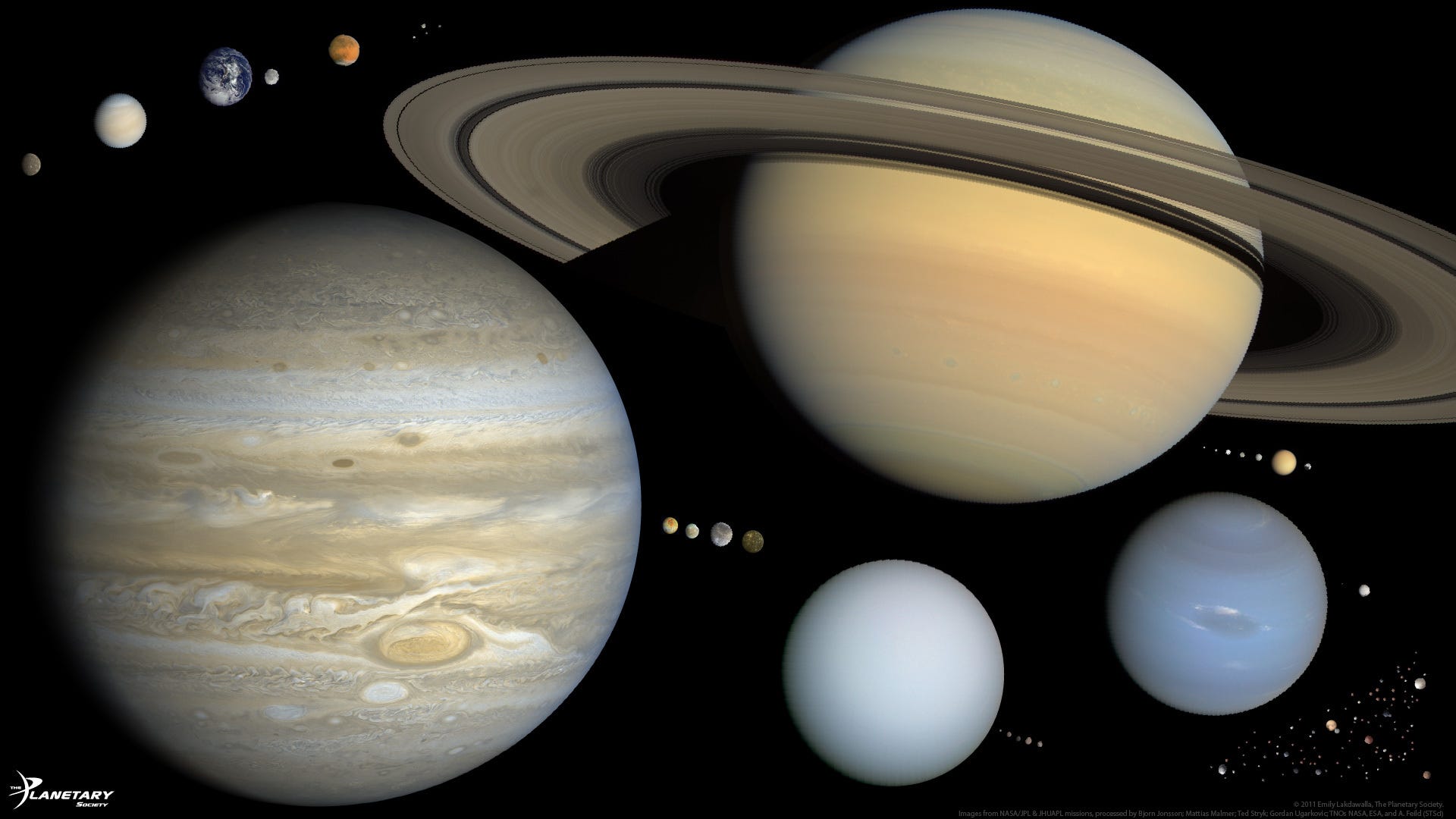
Giant planets wreck havoc
The giant planets formed closer to the Sun than where they are now. There wasn’t enough material in the solar disk for Uranus and Neptune to form where they currently orbit, 19 and 30 times farther from the Sun than Earth, respectively. The Kuiper belt also likely formed closer in, roughly spanning the current orbital distances of Uranus and Neptune.
Simulations suggest that the orbits of the giant planets shifted about 4.1 billion years ago. Gravity from the numerous Kuiper belt objects nudged Jupiter and Saturn into a 2:1 resonance, meaning Jupiter orbited the Sun twice for every Saturn orbit. This periodically brought the two planets close together, causing wide-ranging gravitational effects.
Uranus and Neptune got pushed further away from the Sun, ploughing through the Kuiper belt, scattering most of its objects either inward or outward over the next millions of years. The outwardly scattered worlds formed today’s sparsely populated Kuiper belt and the farther-away sphere of icy bodies we call the Oort cloud. This is where most comets come from.
The inwardly scattered worlds raced through the inner solar system, smashing into the worlds there and creating basins as large as a thousand kilometers or more on Mercury, Venus, Earth, the Moon, and Mars. Scientists call this event the Late Heavy Bombardment.
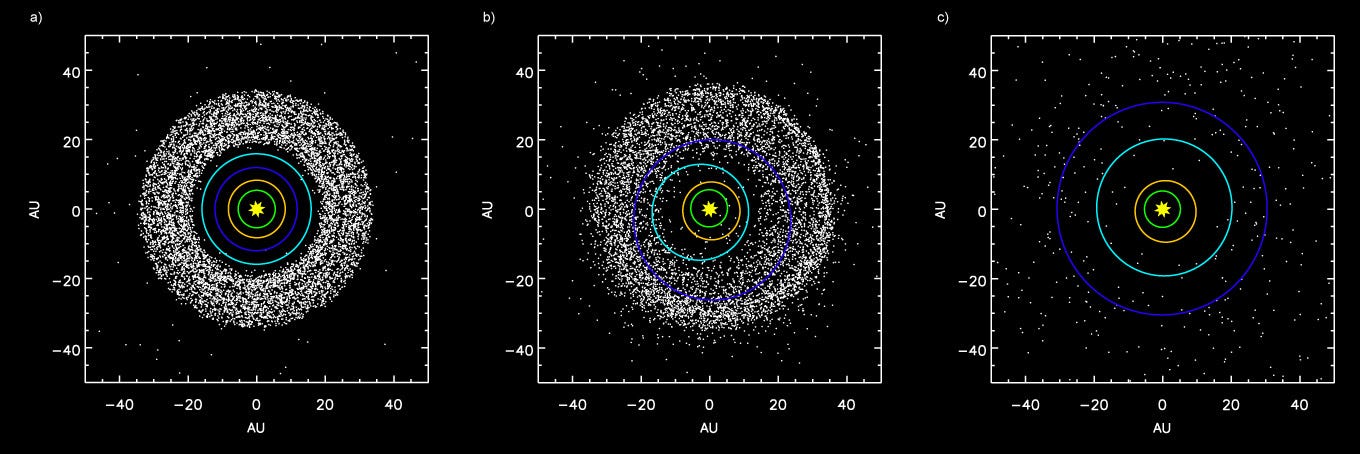
Destruction and life
Blistering impacts during the Late Heavy Bombardment heated the inner planets and our Moon, which had barely cooled after their formations. Widespread volcanism resulted and continued for about 500 million years. The Late Heavy Bombardment is thought to have brought water and possibly organic materials—essential ingredients for life as we know it—to the inner planets, which had otherwise lost most of their water after being internally heated during their formation.
Mercury and the Moon couldn’t hold on to much of this imported water due to their weaker gravities, except the fractional amount that froze inside permanently shadowed regions. Some volcanic activity continued on the Moon and Mercury until one billion years ago, when their interiors cooled enough to stop it.
Venus’ surface may have held onto liquid water for two billion years, until something turned this potentially Earth-like world into the hellscape it is today. It is still geologically active.
Mars was habitable for at least some periods of time around 3 to 4 billion years ago, with lakes and river-like channels of water on its surface. But without a protective magnetic field, solar radiation stripped off most of Mars’ atmosphere and water 3 billion years ago and the planet turned into a cold, dry desert. The Martian moons Phobos and Deimos are either asteroids captured by Mars around the time of the Late Heavy Bombardment or they coalesced from debris ejected by an asteroid that collided with the red planet. Observations of Mars show that the planet was volcanically active just a few million years ago.
Fortunately for us, the water on Earth stuck around. The oldest unambiguous evidence of life on Earth is from 3.5 billion years ago, after the Late Heavy Bombardment. Photosynthetic organisms evolved 2.5 billion years ago and started pumping oxygen into our atmosphere, helping create the blend of gases we breathe today. Our planet is still geologically active.
A calmer place?
After the Late Heavy Bombardment, the solar system became a calmer place. Asteroid impacts still happen but their frequency and the sizes of impacts have reduced drastically. There is still cause for concern as some relatively large impacts have happened in the last 100 million years:
- An asteroid or comet impacted the Moon and formed the 86-kilometer-wide Tycho crater 108 million years ago, which you can see from Earth. The dinosaurs would have been alive and thriving to witness this event. During the same geological era, Saturn’s iconic rings formed.
- A five-to-fifteen-kilometer-wide asteroid impacted Earth 66 million years ago, causing global climate change. This caused the extinction of three quarters of life on Earth, including the dinosaurs.
- Comet Shoemaker-Levy 9 crashed into Jupiter in 1994 in a spectacular but sobering event witnessed by telescopes around the world. Even more recently in 2013, an asteroid exploded over the Russian city of Chelyabinsk, damaging buildings and sending more than a hundred people to area hospitals. Our planet remains at risk for dangerous asteroid impacts, highlighting the need for planetary defense.
Space exploration teaches the timeline
How do we know all this? Space exploration missions, Earth-based observations, and other scientific activities help us piece together our past. While we can’t look back and see how our solar system was born, we have observed similar baby star systems using observatories like the Hubble Space Telescope, which has imaged young stars in the Orion nebula surrounded by rotating disks that will evolve into star systems like our own. We know the Sun formed alongside other stars in the same cloud complex because the orbits of some of the farthest objects in our solar system can only be explained if other stars once came close enough to gravitationally nudge them.
We know the solar system’s age thanks to multiple lines of evidence. At some point in their orbits around the Sun, several small rocks from the original disk that formed the solar system have fallen on Earth as meteorites. Using extensive laboratory analysis, scientists found the oldest to have formed 4.57 billion years ago. The oldest Moon rocks brought back to Earth by the Apollo missions have an age of 4.46 billion years. We’ve found well-preserved sedimentary rocks in Australia that contain grains that are 4.4 billion years old.
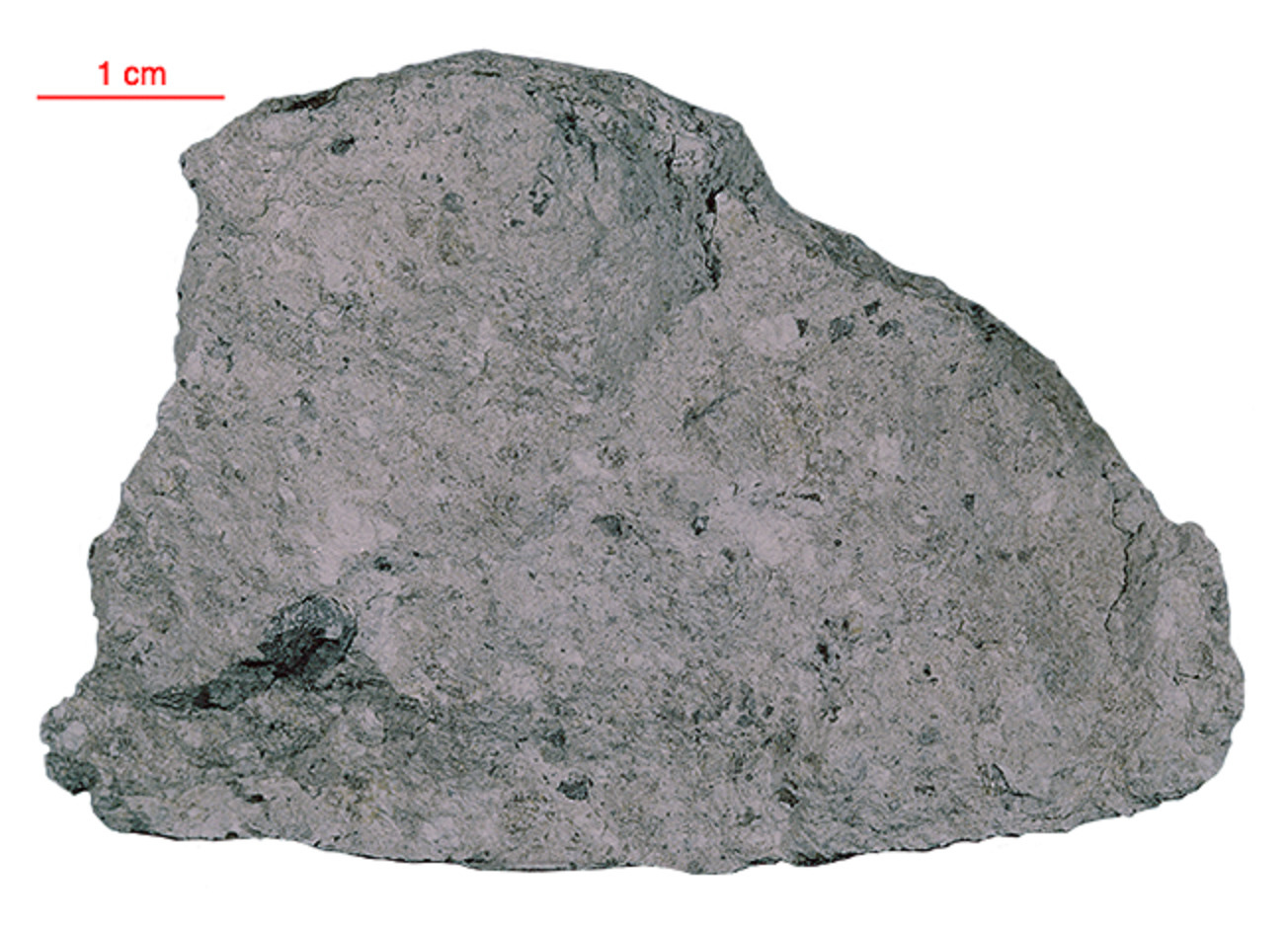
There is much we don’t know about the Late Heavy Bombardment. Volcanism, geologic processes, and weathering wiped out much of the evidence on Venus, Earth, and Mars. Fortunately, the airless Moon still bears scars from those days that you can see from Earth. Moon samples brought back from Apollo missions revealed the ages of some of its largest basins to be between 4.1 to 3.8 billion years old, which is how we even inferred the possibility of such an event taking place.
Missions to asteroids and comets like Rosetta, Hayabusa2, and OSIRIS-REx continue teaching us about small worlds and how much of Earth’s water and organics they delivered here. In 2019, New Horizons visited Arrokoth, giving us our first close look at the structure and composition of one of the most primitive solar system objects.
Future space missions will tell us even more. There are two clumps of asteroids called Trojans that share Jupiter’s orbit around the Sun. Jupiter’s journey from its original location may be imprinted on these asteroids as they moved along with Jupier. A NASA mission called Lucy is slated for launch in October 2021 to visit 7 of Jupiter’s Trojans for the first time, helping us figure out what really happened in the early solar system.
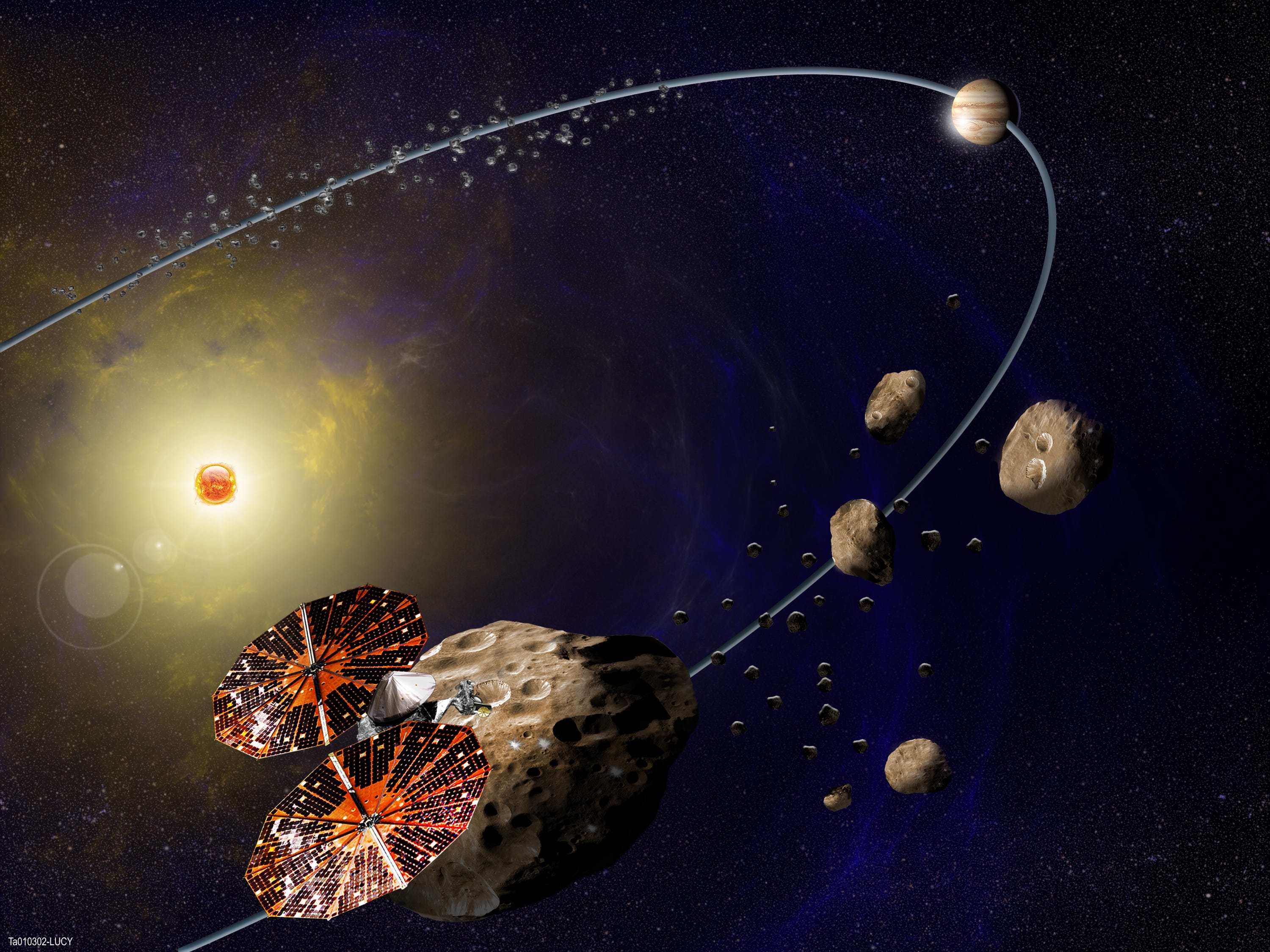
Japan’s upcoming MMX mission will try to determine the origin of Mars’ two moons by bringing samples of Phobos back to Earth. New missions to Uranus and Neptune are needed to help us understand where the ice giants were born and how they evolved. NASA, international space agencies, and private companies are sending robotic and human missions to the Moon. Some of these missions will collect samples from more diverse areas than the Apollo missions, which will help us understand the Moon and Earth’s past.
We still have much to learn, and because science is an iterative process some of our assumptions will change with new discoveries and future missions.
Further reading:
- Lunar and Planetary Institute's gallery on the evolution and history of our solar system, the Moon and Earth
- A technical overview of our solar system's history, with lots of graphs and numbers
- The book From Dust to Life: The Origin and Evolution of Our Solar System by John Chambers and Jacqueline Mitton
Originally published at The Planetary Society.
→ Browse the Blog | About | Donate ♡
